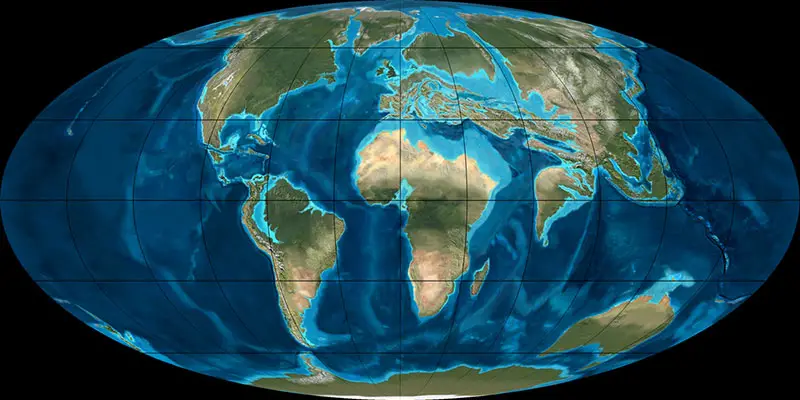†Simpsonlemur (Paromomyidae)
Simpsonlemur ist eine Primatengattung innerhalb der Familie Paromomyidae, deren 3 Mitglieder ab dem frühen Paläogen (Eozän) im Ypresium lebten, das vor ungefähr 56 Millionen Jahren begann und bis vor 47,8 Millionen Jahren andauerte. Viele Überreste wurden in Vereinigte Staaten von Amerika (USA) gefunden.
Simpsonlemur aus der Familie Paromomyidae (Tribus Simpsonlemurini innerhalb der Unterfamilie Phenoacolemurinae) war vom mittleren Paläozän bis in frühe Eozän in Nordamerika verbreitet.
Die beiden Arten S. citatus und S. jepseni wurden in geologischen Schichten gefunden, die zwischen 55,8 und 48,6 Millionen Jahre alt sind.
Simpsonlemur citatus
Simpsonlemur citatus war ein kleiner baumlebender Omnivore (Allesfresser) und erreichte ein Körpergewicht von ca. 184 Gramm (Fleagle, 1999).
| Sammlung | Kommentar zum Fundort | Epoche, Alter | Geologie, Formation | Kommentar zur Sammlung |
|---|---|---|---|---|
| Lysite | Wind River | CM 114; "Type Area of the Lysite Member" | ||
| Kommentar z. Taxonomie | ||||
| from a 10 sq. mi. area about 4 mi. N and NE of Lysite; Cottonwood Creek, Davis Draw, and Bridger Creek drainages (all are tributaries of Badwater Creek) includes Basal, Middle, and Upper Cliff localities (= locs. 1-5, 6a, 6b, 6c, 7 - 9); CM 114 equals Guthrie's locality 6 interval is >= 40 m (Guthrie), <=80 to 100 m (Korth 1982) this does NOT include the "Guthrie" series of localities from the Lost Cabin Mbr. Korth 1982 suggests that Lambdotherium is not from this interval, but Guthrie did not include it in his list in any case specimen of Bunophorus sinclairi is actually from CM loc. 34: Stucky and Krishtalka 1990 |
| Physiologie | |
|---|---|
| Gewicht: | ? |
| Schwestertaxa | |
Simpsonlemur jepseni
Simpsonlemur jepseni erreichte ein Körpergewicht von ca. 184 Gramm (Fleagle, 1999).
| Sammlung | Epoche, Alter | Geologie, Formation | Kommentar zur Sammlung |
|---|---|---|---|
| Anthill Quarry | Wasatch | UCMP V-5346 | |
| Museum | |||
| UCMP |
Literatur
D. A. Guthrie 1967, The mammalian fauna of the Lysite Member, Wind River Formation (early Eocene) of Wyoming. Memoirs of the Southern California Academy of Sciences. 5, p. 1 - 53W. C. Clyde 1997, Stratigraphy and mammalian paleontology of the McCullough Peaks, northern Bighorn Basin, Wyoming: Implications for biochronology, basin development, and community reorganization across the Paleocene-Eocene boundary. PhD Thesis, University of Michigan. , p. - 53
J. Alroy 2002, Synonymies and reidentifications of North American fossil mammals. . , p. - 53
